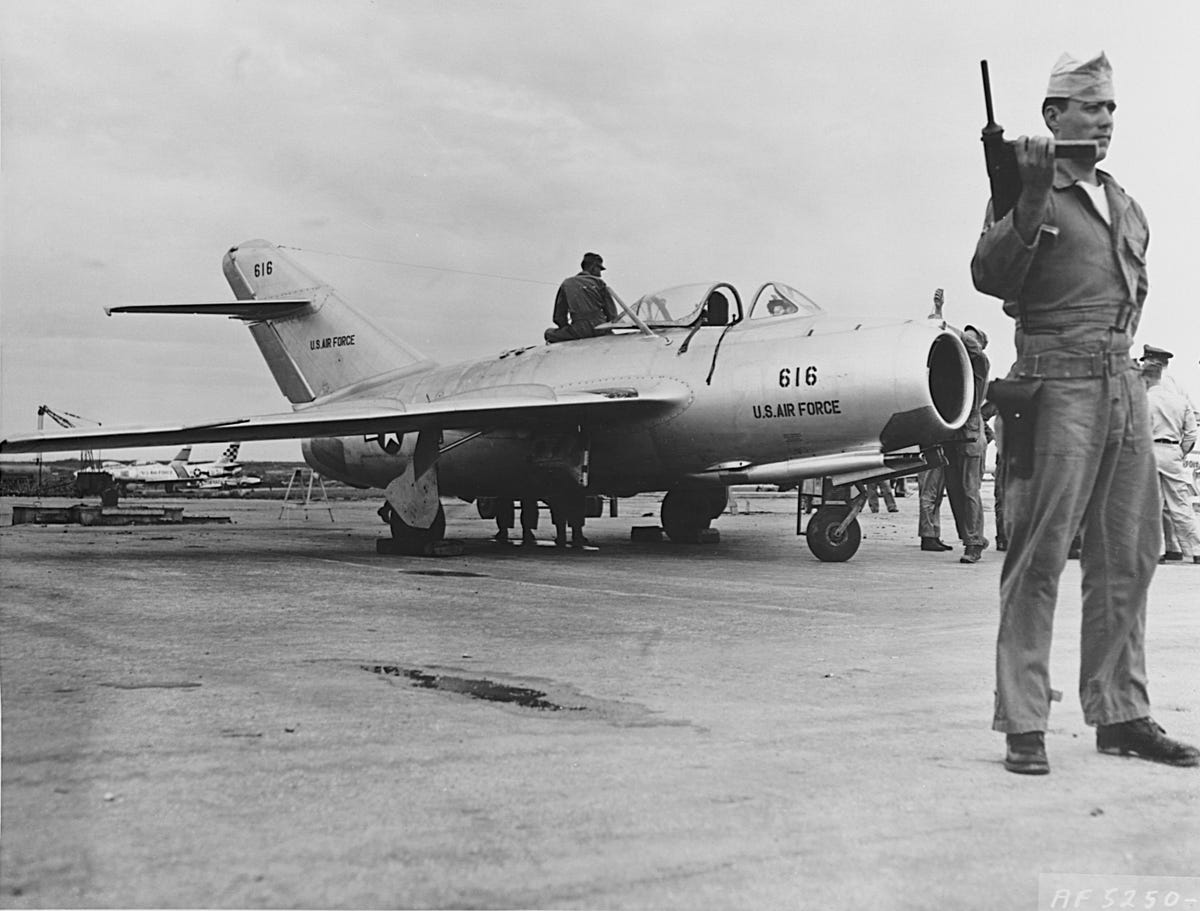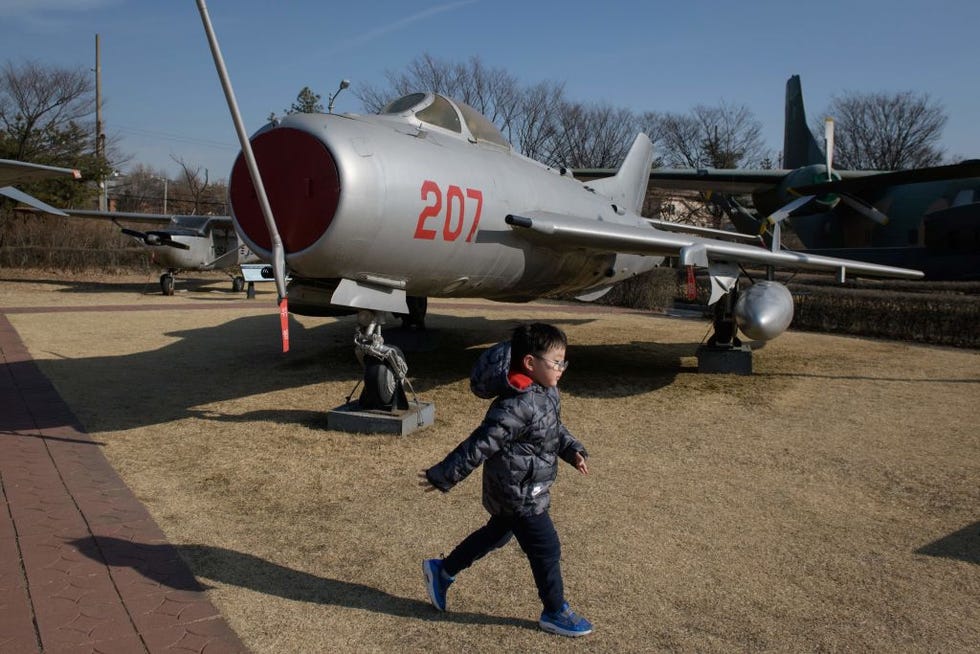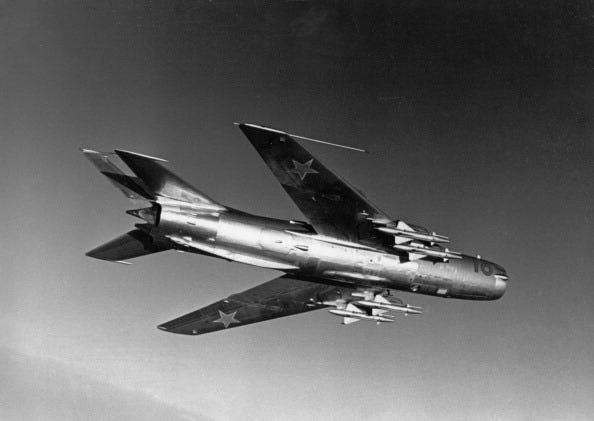KYLE MIZOKAMI

One of the most memorable scenes from the 1990 film The Hunt For Red October is when the first officer of the submarine Red October, played by Sam Neill, describes how he would like to live as a defector. “I would like to live in Montana,” Captain Borodin says, who then goes on to describe how he would like to marry, own a pickup truck, maybe an RV, and travel from state to state . . . without having to carry travel papers on him.
Turns out, that’s pretty much how defectors actually live when they arrive in the West. After a decades-long hiatus, news that a Russian engineer who worked on the country’s bomber program is requesting asylum in the USA has brought the issue of defectors back into the spotlight.
“Kenneth Rowe”

A MiG-19 fighter flown by Captain Lee Ung-pyong of the North Korean People’s Air Force when he defected to South Korea, 1983. Today, the fighter jet is parked in an outdoor museum in Seoul.Getty Images
Lt. No Kum-Sok of the North Korean Air Force was one of the first pilots to defect to the United States. No broke away from a formation of 16 jets, and piloted his MiG-15 from North Korea to Kimpo Airfield in South Korea in October 1953, three months after the armistice that silenced the guns on the Korean peninsula. No was not the first MiG-15 pilot to fly to the West, though: two Polish pilots had flown their planes to Denmark in separate incidents in the spring of 1953, but No was the first from North Korea.
U.S. intelligence extensively debriefed No, and studied his plane for comparison to the main U.S. fighter jet of the time, the F-86 Sabre. He provided valuable information, according to his American handler, including, “air units, personnel strength, structure, and number of aircraft assigned to respective units.” No’s fighter was given U.S. Air Force markings (see top), and sent to the USA for analysis.
No then disappeared into the vastness of America, taking the name Kenneth Rowe. He became a U.S. citizen in 1962, earned a mechanical engineering degree, and began working in the defense industry. In his later years, he was a professor of engineering at Embry-Riddle Aeronautical University in Daytona Beach, Florida. At one point, his daughter asked him why he kept switching jobs and moving his family around, and he replied: “This is a big country and I want to see every part of it.”
A Pair of “Farmers”

A Soviet Mikoyan-Gurevich MiG-19 (NATO code name: “Farmer”) fighter jet in flight, 1960s.Getty Images
Other North Korean pilots followed suit. In 1983, Captain Lee Ung-pyong flew his MiG-19 jet to South Korea and defected. Within two years, Lee was a colonel working in South Korean military intelligence, and a millionaire to boot—all thanks to South Korea’s generous rewards for defectors.
In May 1996, Capt. Lee Chul-su, a senior pilot in the 1st Aviation Division, also defected with his MiG-19, whereupon he promptly joined the South Korean Air Force. According to the Korean Times, Lee served with the “ROK Air Force’s combat development group and other pilot training organizations,” and lectured “on various subjects including North Korean flying skills, and tactics.”
Flight of the Foxbat

A Soviet Air Force MiG-25 at Savatiya Air Base in Arkhangelsk Oblast, Russia, 1988.Getty Images
One of the most famous defections of all time took place in September 1976. Lieutenant Viktor Ivanovich Belenko of the 513th Fighter Regiment, 11th Air Army took off in his MiG-25 fighter jet, code-named “Foxbat” by NATO, from Chuguyevka Airbase in the Soviet Union. He would never return. Belenko instead flew his jet to Hakodate, Japan, where he turned over his jet and announced his intentions to defect.
Belenko was one of the biggest prizes of the Cold War. The MiG-25 was considered a superfighter, capable of Mach-3 flight. The Foxbat had been built to defend the USSR from the equally fast XB-70 Valkyrie strategic bomber. It was also known to have a powerful Smerch-A3, and carry up to four radar-homing R-40 air-to-air missiles. Unfortunately, while U.S. intelligence was able to study the aircraft in depth, Japanese authorities decided to return the aircraft to the Soviet Union.
After the defection, Belenko moved to the United States, where former President Jimmy Carter personally approved his citizenship. He also became an aeronautical engineer and consultant. The CIA, which debriefed him after his defection, counts his pilot’s knee pad as one of its most famous artifacts from the Cold War era. One people-locating website shows him as having lived in every major region of the U.S., including the west, midwest, northeast, and the south.
The Takeaway
Pilots who defect often do so for ideological reasons, preferring freedom and democracy over the stifling control of authoritarian regimes. At The Hunt for Red October’s climax, Captain Borodin, dying of a gunshot wound, whispers, “I would like to have visited Montana.” Although fictional, Borodin’s character expresses a desire seemingly mirrored—and lived—by real-life defectors.
No comments:
Post a Comment